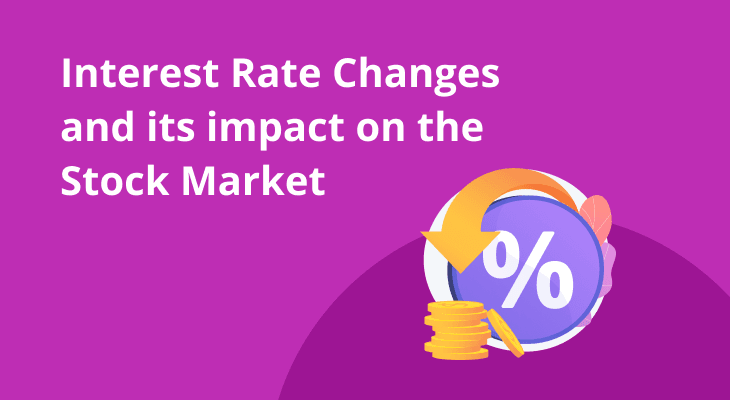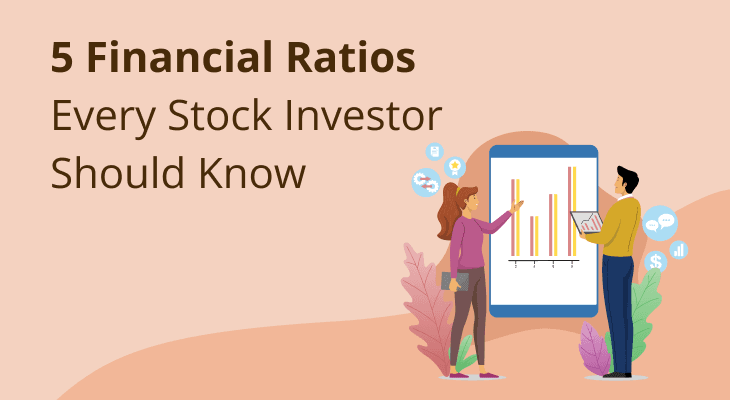
Impact of Interest Rate Changes on the Stock Market
Interest rates play a significant role in shaping the stock market's performance. When central banks adjust interest rates, they influence borrowing costs, corporate profitability, and investor sentiment. For investors and market participants, understanding the relationship between interest rates and the stock market is essential for making informed financial decisions. In this article, we explore how interest rate changes affect the economy, stock prices, market volatility, and investor strategies.
Understanding Interest Rates
Interest rates represent the cost of borrowing money. In India, they are determined by the central bank, the Reserve Bank of India (RBI), to control inflation and economic growth.
Types of Interest Rates:
- Policy Interest Rate: The rate set by central banks that influences all other interest rates.
- Lending Rates: The rates at which banks lend to businesses and individuals.
- Deposit Rates: The rates banks offer on savings and fixed deposits.
- Bond Yields: The return investors receive on government or corporate bonds.
Changes in these rates impact consumer spending, business expansion, and stock market performance.
How Interest Rate Changes Affect the Economy
Interest rate changes ripple through the economy, influencing various aspects of financial activity.
When Interest Rates Increase:
- Higher Borrowing Costs: Businesses and individuals find it more expensive to take loans, reducing capital expenditure and consumer spending.
- Lower Corporate Profits: Higher interest expenses reduce company earnings, potentially leading to lower stock prices.
- Reduced Inflation: Increased interest rates help curb inflation by reducing excess liquidity in the economy.
- Stronger Currency: Higher rates attract foreign investments, strengthening the domestic currency.
When Interest Rates Decrease:
- Lower Borrowing Costs: Businesses expand more aggressively, and consumers spend more.
- Higher Inflation Risk: Excessive borrowing can lead to inflationary pressures.
- Weaker Currency: Lower interest rates may cause capital outflows, weakening the currency.
- Boost to Asset Prices: Stocks, real estate, and commodities often rise due to increased liquidity.
Direct Impact on the Stock Market
Stock Valuations and Discount Rates
Stock prices estimations using various models are often calculated using discounted cash flow (DCF) models, where future earnings are discounted to present value. When interest rates rise, the discount rate increases, leading to lower present values and lower stock prices. Similarly, in case interest rates fall, the discount rate falls, which leads to higher stock prices.
Dividend Yield vs. Bond Yield Comparison
Investors compare dividend yields of stocks with bond yields. When interest rates rise, bond yields become more attractive, leading investors to shift from stocks to bonds, causing stock prices to fall.
Earnings and Corporate Debt
Higher interest rates increase borrowing costs for businesses, reducing their profitability. This impacts stock valuations, especially in sectors that rely heavily on debt, such as infrastructure and real estate.
Sector-Wise Impact of Interest Rate Changes
Not all sectors respond equally to interest rate fluctuations. Some benefit, while others suffer.
Sector | Impact of Rising Rates | Impact of Falling Rates |
Banking & Financials | Increased profitability as lending rates rise faster than deposit rates | Lower net interest margins may hurt profitability |
Real Estate | Higher mortgage costs reduce demand for property | Lower borrowing costs boost property sales |
Technology | Expensive capital reduces R&D and expansion | Lower financing costs help tech growth |
Consumer Goods | Reduced discretionary spending lowers sales | Increased consumer spending benefits businesses |
Utilities | High capital costs impact profitability | Lower rates reduce operational expenses |
Understanding these dynamics helps investors adjust their portfolios accordingly.
Investor Sentiment and Market Volatility
Interest rate decisions influence market psychology. Uncertainty about future rate changes leads to increased volatility, as traders adjust their positions based on central bank statements and macroeconomic indicators.
Market Reactions to Interest Rate Announcements:
When central banks announce interest rate changes, the stock market often reacts immediately, with investors adjusting their portfolios based on perceived impacts. However, the impact is not uniform across all investor types.
- Retail Investors: Individual investors tend to react more emotionally to interest rate changes, often making impulsive decisions based on market sentiment. A sudden rate hike might trigger panic selling, while an unexpected rate cut could lead to overenthusiastic buying.
- Institutional Investors: Large investment firms, hedge funds, and pension funds follow a more strategic approach. They adjust their asset allocations based on macroeconomic data and central bank guidance, often anticipating rate changes ahead of time.
- Foreign Investors: Interest rate changes also impact foreign capital flows. Higher rates tend to attract foreign investments into government bonds and stable assets, while lower rates may result in capital outflows as investors seek higher returns elsewhere.
Market Reactions to Interest Rate Announcements:
- Rate Hike Surprise: If an interest rate hike is unexpected, markets often react negatively as higher borrowing costs reduce corporate earnings and economic activity. Stocks may decline, and bond yields rise as investors move to safer assets.
- Expected Rate Hike: When markets anticipate a rate increase, much of the impact is already priced in, leading to minimal immediate movement. However, specific sectors, such as banking, may experience gains due to higher lending rates.
- Rate Cut Surprise: An unexpected rate cut usually triggers a stock market rally, as lower borrowing costs boost corporate profitability and consumer spending. Investors tend to move towards riskier assets like equities.
- Expected Rate Cut: If a rate cut is widely expected, the market response may be moderate, with specific interest-rate-sensitive sectors benefiting more than others.
Investor sentiment plays a critical role in shaping short-term market movements, often leading to overreactions and corrections. Central bank statements and forward guidance also influence investor expectations and market trends beyond the immediate reaction.
Additionally, modern financial markets rely heavily on automated trading algorithms that respond to interest rate news in milliseconds. This can amplify short-term volatility, as rapid, large-scale trades occur based on pre-programmed responses to central bank announcements. The speed and magnitude of these automated trades can cause sharp price swings, sometimes leading to market reactions beyond what fundamentals might suggest.
Strategies for Investors During Interest Rate Fluctuations
Navigating interest rate changes requires a well-planned investment approach. Here are key strategies for different rate environments:
When Interest Rates Are Rising:
- Shift to Defensive Sectors: You can invest in consumer staples, healthcare, and utilities, which are less affected by interest rate hikes.
- Reduce Exposure to Debt-Reliant Stocks: You may want to avoid real estate and heavily leveraged companies.
- Consider Short-Duration Bonds: These are, usually, less sensitive to rate increases than long-term bonds.
- Diversify Globally: Foreign markets with lower rate hikes may provide better opportunities.
When Interest Rates Are Falling:
- Invest in Growth Stocks: Technology, e-commerce, and discretionary consumer stocks perform well.
- Increase Exposure to Real Estate and Infrastructure: Lower borrowing costs boost these sectors.
- Consider Long-Duration Bonds: They provide higher capital appreciation in a declining rate environment.
- Look at Dividend Stocks: Lower rates make dividend-paying stocks attractive compared to fixed-income instruments.
Implementing these strategies can help mitigate risks and optimise returns in fluctuating interest rate conditions. Remember, these are just suggestions. Any financial decision should be backed by thorough research and / or after consultation with a financial advisor.
FAQ
How do interest rate changes affect stock prices?
Interest rate changes directly impact stock prices by influencing borrowing costs. Higher interest rates lead to more expensive business loans, which may reduce a company’s profitability and stock price. Lower interest rates make borrowing cheaper, potentially boosting corporate profits and leading to higher stock prices.
What happens to the stock market when interest rates increase?
When interest rates increase, borrowing becomes more expensive, leading to lower consumer spending and reduced corporate profits. As a result, stock prices generally fall, especially for companies with significant debt. Interest rate hikes can also make bonds more attractive, causing investors to shift money from stocks to bonds, which may further depress the stock market.
How do interest rate cuts affect the stock market?
Interest rate cuts typically lead to a decrease in borrowing costs for both consumers and businesses. This encourages spending and investment, which can boost corporate profits and drive up stock prices. Lower interest rates often make bonds less appealing, prompting investors to move towards equities, which can increase demand for stocks and push prices higher.
Why do central banks change interest rates?
Central banks change interest rates primarily to control inflation and manage economic growth. When inflation is high, central banks may raise interest rates to reduce inflationary pressures. When economic growth is slow, central banks may lower interest rates to stimulate spending, investment, and borrowing, thereby boosting economic activity.
How do interest rates impact sectors like technology and real estate?
Interest rate changes affect different sectors in various ways. The technology sector tends to benefit from lower interest rates because cheaper borrowing costs help fund research, development, and expansion. Higher rates can lead to increased mortgage costs, reducing property demand, while lower rates typically stimulate the real estate market by making mortgages more affordable.
What is the relationship between interest rates and bond yields?
Bond yields and interest rates have an inverse relationship. When interest rates rise, bond yields also tend to rise, making newly issued bonds more attractive to investors than existing bonds with lower yields. As a result, the value of older bonds falls. Conversely, when interest rates fall, bond yields decrease, making existing bonds with higher yields more valuable.
How does investor sentiment change with interest rate fluctuations?
Investor sentiment is often heavily influenced by interest rate changes. When rates rise unexpectedly, investors may panic and sell off stocks, fearing lower corporate profits and slower economic growth. Conversely, rate cuts are often seen as a positive signal, prompting investors to buy stocks in anticipation of economic recovery. Market volatility can increase as investors react quickly to rate announcements.
Can interest rate changes affect the performance of dividend-paying stocks?
Yes, interest rate changes can impact dividend-paying stocks. When interest rates rise, fixed-income investments like bonds become more attractive due to their higher yields, potentially leading investors to sell dividend-paying stocks. When interest rates are low, dividend-paying stocks become more appealing because they offer a better return than bonds, driving up stock prices in this segment.
How do interest rate hikes affect long-term investments?
Long-term investments, particularly in growth stocks and bonds, are often negatively impacted by interest rate hikes. Higher rates reduce the present value of future earnings for growth stocks, leading to price declines. Similarly, long-term bonds become less attractive as rising yields offer better returns, causing existing bonds to decrease in value. Investors may also reassess their portfolios, shifting away from long-term growth stocks and bonds in favor of sectors or assets less affected by higher rates.


